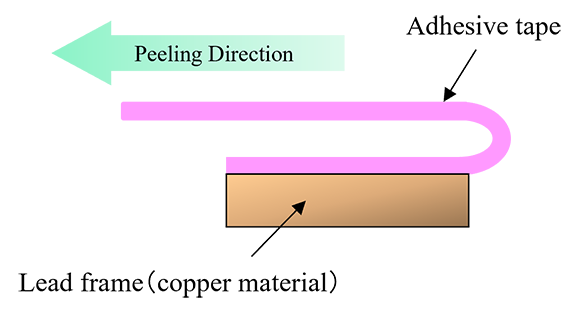Heat-resistant copper anti-tarnish agent (AT-4)
Test results of copper oxide film peeling
| 280℃ | 300℃ | 320℃ | 340℃ | 360℃ | 380℃ | 400℃ | |
|---|---|---|---|---|---|---|---|
| Untreated |
 |
 |
 |
 |
 |
 |
 |
| Peeling area ratio(%) | 0 | 0 | 10 | 20 | 50 | 90 | 100 |
| AT-4 |
 |
 |
 |
 |
 |
 |
 |
| Peeling area ratio(%) | 0 | 0 | 0 | 0 | 0 | 1 | 5 |
Copper material: C194 alloy + copper strike plating (0.2 μm)
Test method of
copper oxide film peeling (tape peeling)

- 1Heat on a hot plate for five minutes (280 to 400°C)
- 2Hold the adhesive tape at an angle of 180° to the surface and peel it off.
- 3Calculate the ratio of copper oxide film transferred to the adhesive tape from the overall area ratio.
Features
- Contains a new component with higher heat resistance than general copper anti-tarnish agents (benzotriazole).
- Forms a dense monomolecular film that has a high affinity for copper.
- The formation of monomolecular film acheives both wire bondability and solderability.
- Copper oxide film peeling resistance comparable to conventional silver potassium cyanide (PSC) additive type.
- In addition to the above properties, it is also highly resistant to moisture and heat discoloration.
Main applications
- IC lead frames
- Copper bonding wires
- Conductive copper paste
- Copper bump joints
Please contact us for details.
Contact Us
Inquiry to Products,
Services and/or Business